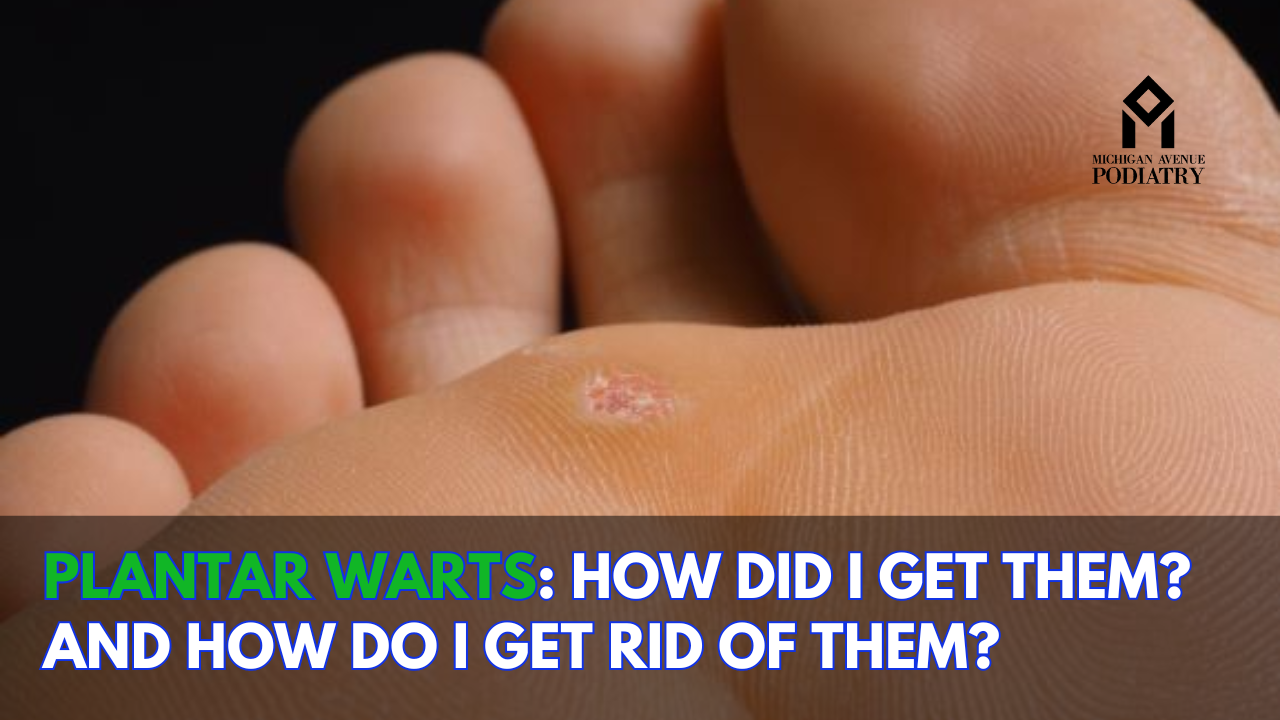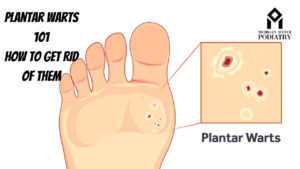Plantar warts, those pesky little bumps that often appear on the soles of your feet, can be both uncomfortable and unsightly. If you’ve ever found yourself wondering how you got them and how to get rid of them, you’re not alone. In this comprehensive guide, we’ll explore the causes of plantar warts, their symptoms, and effective treatment options to help you banish them for good. Plus, we’ll discuss the role of a podiatrist in managing and treating plantar warts effectively.
What Are Plantar Warts?
Plantar warts are small growths caused by the human papillomavirus (HPV) that commonly infects the outer layer of the skin on the soles of your feet. They often appear as rough, grainy lesions with tiny black dots (referred to as “wart seeds”) that can cause discomfort when walking or standing.
How Did I Get Them?
Plantar warts are highly contagious and can be contracted through direct contact with the virus. Here are some common ways you may have acquired them:
- Walking Barefoot in Public Places: HPV thrives in warm, moist environments such as swimming pools, locker rooms, and communal showers. Walking barefoot in these areas increases your risk of coming into contact with the virus.
- Skin-to-Skin Contact: Direct contact with someone who has plantar warts or with surfaces contaminated by the virus can transmit HPV to your feet.
- Weakened Immune System: Individuals with weakened immune systems are more susceptible to HPV infections, making them more prone to developing plantar warts.
- Minor Cuts or Abrasions: The virus can enter your skin through tiny cuts or abrasions on the soles of your feet, providing an entry point for infection.
Symptoms of Plantar Warts
Plantar warts can vary in appearance and may present different symptoms, including:
- Small, fleshy bumps on the soles of your feet.
- Rough or grainy texture with tiny black dots.
- Pain or tenderness when walking or standing, especially if the wart is located over a pressure point.
How Do I Get Rid of Them?
While plantar warts may disappear on their own over time, treatment is often recommended to alleviate discomfort and prevent spreading. Here are some effective treatment options:
- Over-the-Counter Treatments: There are various over-the-counter treatments available, such as salicylic acid pads, gels, or solutions. These products work by gradually breaking down the wart tissue over several weeks.
- Cryotherapy: This procedure involves freezing the wart with liquid nitrogen to destroy the infected tissue. Cryotherapy is typically performed by a healthcare professional, such as a podiatrist, and may require multiple sessions for complete removal.
- Prescription Medications: In some cases, your doctor may prescribe topical medications or oral treatments to help eliminate the wart and boost your immune response against the virus.
- Surgical Removal: For stubborn or recurring plantar warts, surgical removal may be necessary. This procedure, known as curettage, involves cutting or scraping off the wart under local anesthesia.
The Role of a Podiatrist
A podiatrist, also known as a foot doctor, specializes in the diagnosis, treatment, and prevention of foot and ankle disorders, including plantar warts. Here’s how a podiatrist can help:
- Accurate Diagnosis: A podiatrist can accurately diagnose plantar warts and differentiate them from other foot conditions, ensuring appropriate treatment.
- Tailored Treatment Plans: Based on the severity of your condition and your medical history, a podiatrist can create a personalized treatment plan tailored to your needs, which may include a combination of treatments.
- Professional Care: Podiatrists have the expertise and experience to perform advanced treatments, such as cryotherapy or surgical removal, safely and effectively.
- Preventive Measures: A podiatrist can guide preventive measures to reduce your risk of developing plantar warts in the future, such as wearing protective footwear in public places and maintaining good foot hygiene.
In Conclusion
Plantar warts can be a nuisance, but with the right treatment approach and guidance from a podiatrist, you can effectively manage and eliminate them. If you’re experiencing discomfort or have concerns about plantar warts, don’t hesitate to consult a podiatrist for professional evaluation and care. Remember, early intervention is key to preventing further spread and complications. Take the first step towards healthier, wart-free feet today!


